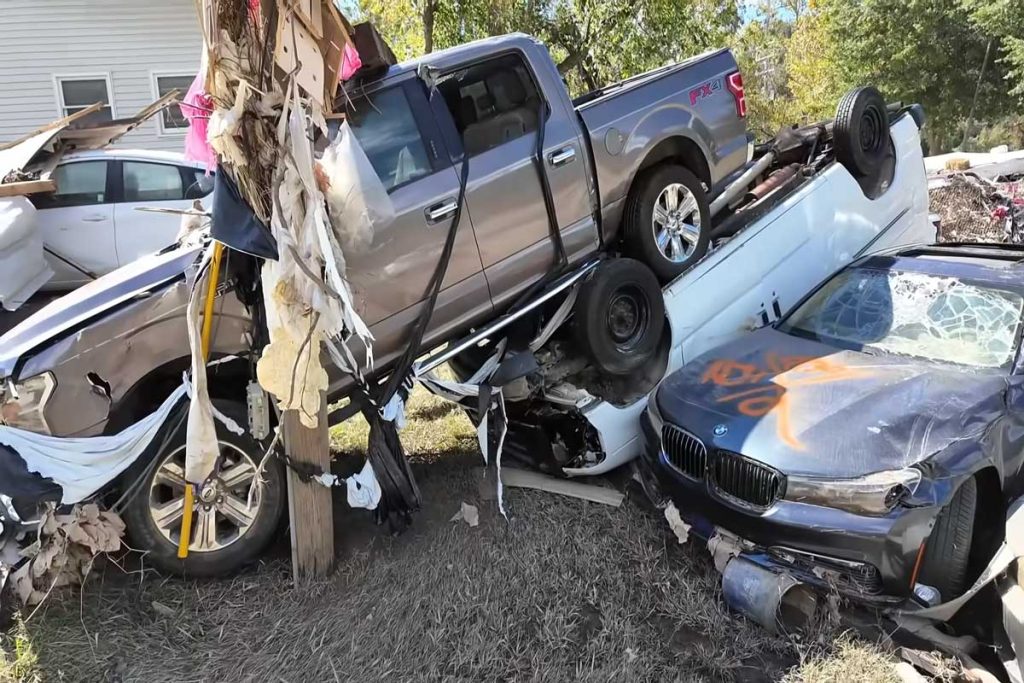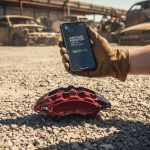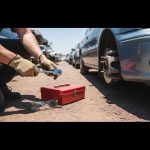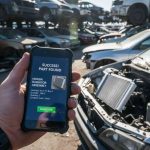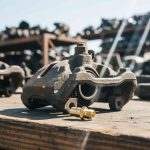Hurricane Helene’s devastating path through the southeastern United States has left a trail of destruction, with thousands of vehicles suffering extensive damage. As communities begin the long process of recovery, junkyards across the region are preparing for an unprecedented influx of flood-damaged cars, trucks, and SUVs.
The Scale of the Damage
Hurricane Helene, a Category 4 storm that made landfall in Florida’s Big Bend region, caused widespread flooding and wind damage across multiple states. The storm’s impact on vehicles has been severe:
| Impact Metric | Value |
|---|---|
| Vehicles destroyed at a single dealership (Ken Ganley Kia, FL) | 672 |
| Estimated damage at Ken Ganley Kia | $28-30 million |
| Pre-existing water-damaged cars in 2024 (CARFAX estimate) | 89,000 |
| Total estimated insured losses from Hurricane Helene | $6.4 billion |
Why Junkyards Are Preparing
Several factors contribute to the expected surge in vehicles heading to junkyards:
- Severe Water Damage: Many vehicles were submerged under several feet of water, causing irreparable damage to engines, electrical systems, and interiors.
- Insurance Write-offs: Insurance companies often declare flood-damaged vehicles as “salvage” or a “total loss,” making them prime candidates for junkyards.
- Hidden Damage: Flood damage can cause hidden issues that slowly turn vehicles into junk, including electrical damage, engine problems, and corrosion.
- Widespread Impact: The hurricane’s path of destruction stretched over 500 miles, affecting multiple states including Florida, Georgia, South Carolina, North Carolina, and Virginia.
The Junkyard’s Role in Recovery
Junkyards play a crucial role in the aftermath of natural disasters like Hurricane Helene:
- They provide a necessary service for disposing of irreparably damaged vehicles.
- They offer a source for salvageable parts, which can be crucial for repairing less severely damaged vehicles.
- They help prevent flood-damaged vehicles from being fraudulently resold to unsuspecting buyers.
Challenges and Opportunities
While junkyards prepare for the influx, they also face challenges:
| Challenge | Description |
|---|---|
| Capacity Issues | The sheer volume of damaged vehicles may strain storage capabilities. |
| Environmental Concerns | Proper disposal of fluids and hazardous materials from flood-damaged vehicles is crucial. |
| Parts Demand | There may be an increased demand for used parts as repair shops work to fix salvageable vehicles. |
Beneficiaries of the Aftermath: A Silver Lining in the Parts Market
While Hurricane Helene’s impact has been devastating, there is a silver lining for certain segments of the automotive industry and vehicle owners. The influx of damaged vehicles is set to create a surge in the availability of used parts, benefiting various groups:
Key Beneficiaries:
- Auto Parts Retailers: Expect to see increased inventory and potentially lower prices on certain parts.
- Independent Mechanics: Will have access to a larger pool of affordable parts for repairs.
- DIY Enthusiasts: More opportunities to find rare or expensive parts at lower prices.
- Vehicle Owners: Potentially lower repair costs due to increased parts availability.
- Salvage Yards: Increased business and inventory turnover.
The influx of parts into the marketplace is expected to have several impacts:
- Increased Parts Availability: With thousands of vehicles affected, a wide range of parts from various makes and models will enter the market.
- Potential Price Reductions: The abundance of certain parts may lead to price reductions, especially for common components.
- Rare Parts Accessibility: Parts for older or rare models may become more accessible as vehicles that are typically not scrapped enter the salvage market.
- Economic Stimulus for Related Industries: Increased activity in parts sales, repairs, and recycling can provide an economic boost to related sectors.
However, it’s important to note that while the increased availability of parts can be beneficial, consumers should remain cautious:
- Ensure that any second-hand parts are thoroughly inspected for flood damage.
- Be wary of unusually low prices, as they may indicate compromised parts.
- When possible, obtain parts from reputable salvage yards or parts dealers who properly inspect and clean their inventory.
The aftermath of Hurricane Helene, while challenging, presents an opportunity for the automotive parts market to demonstrate resilience and adaptability. As the region recovers, the increased availability of parts could play a crucial role in getting people back on the road and supporting the broader economic recovery efforts.
Consumer Awareness
As junkyards fill up with flood-damaged vehicles, consumers need to be vigilant when purchasing used cars in the coming months:
Consumer Awareness Checklist
- ✓ Always check a vehicle’s history report.
- ✓ Look for signs of flood damage, such as rust, water stains, or musty odors.
- ✓ Have a trusted mechanic inspect any potential purchase.
Hurricane Helene’s impact on the automotive landscape of the South will be felt for months, if not years, to come. As junkyards across the region prepare to receive thousands of damaged vehicles, they stand as a crucial part of the recovery process, helping to clear the roads of unsafe vehicles and providing a source for much-needed replacement parts.
